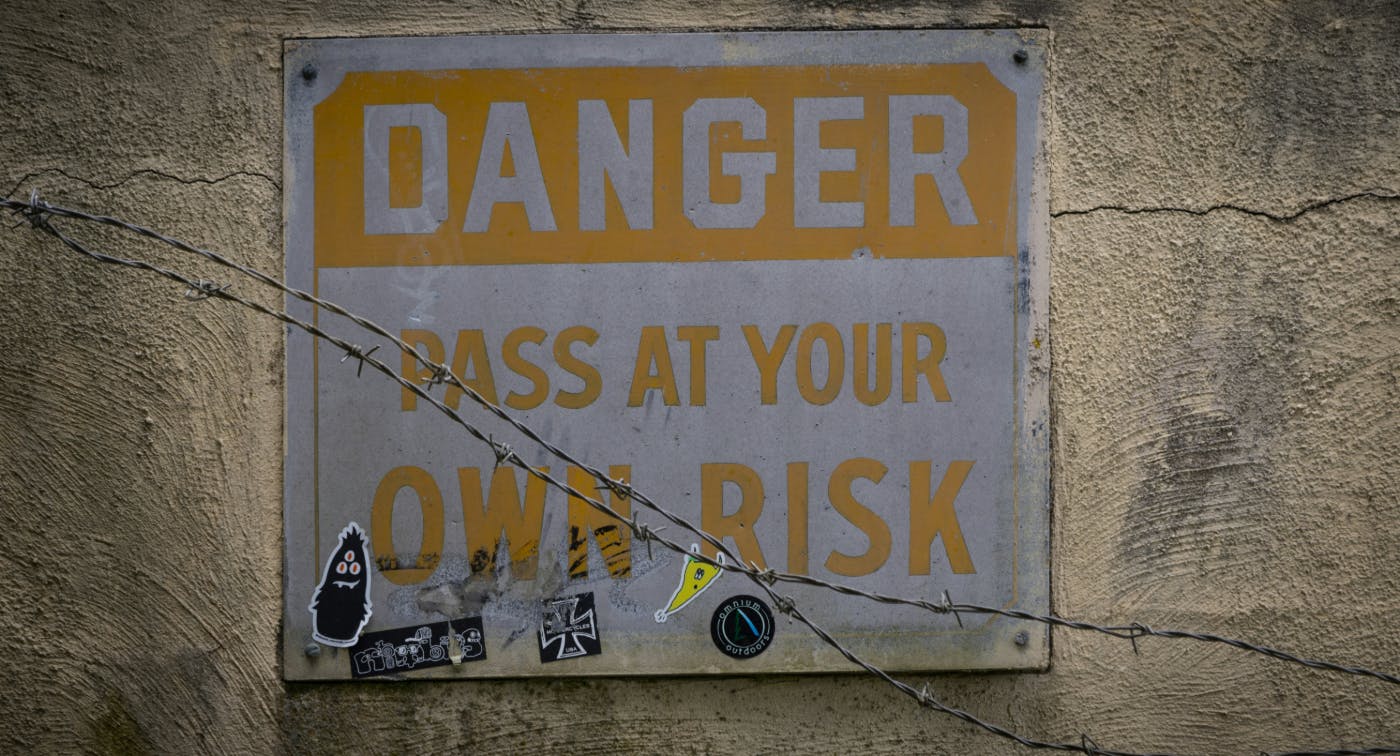
Transparency: the corporate buzzword of the decade. If you believe every About Us page or investor presentation, everyone is transparent these days. It’s the new “innovative”—a word so overused it’s practically meaningless.
What Is Transparency Anyway?
Transparency: the corporate buzzword of the decade. If you believe every About Us page or investor presentation, everyone is transparent these days. It’s the new “innovative”—a word so overused it’s practically meaningless. But let’s strip away the jargon and get real. Transparency, at its core, means openness, honesty, and accountability. It’s about showing your cards, not just the shiny aces but also the less glamorous 2s and 3s.
Transparency is also honest, and ultimately, it is human. No matter how great the product or service is, it is created, sold, managed, and introduced into the world by humans, and humans, thank goodness, are not flawless. Error is human, and how you deal with it can be transparent.
Here’s what transparency isn’t:
- A PR stunt where you “accidentally” leak your diversity numbers after a scandal.
- Releasing quarterly earnings with a side of cryptic footnotes even Sherlock Holmes couldn’t decode.
- Claiming you’re all about the customer while quietly hiking fees.
True transparency is messy, brave, and often uncomfortable. But it’s also essential if you want to build trust that lasts longer than a TikTok trend.
Let’s look at the what, why, and how of this whole Magilla, and maybe we can move beyond the buzzword into reality.
The Why: Transparency Matters
Why bother being transparent? After all, secrets are so much easier. Except that secrets have a nasty habit of unraveling—often at the worst possible moment.
Transparency matters because:
- It builds trust. Customers and employees alike value honesty. Trust, once earned, is a currency that compounds over time.
- It fosters loyalty. People don’t just buy products; they buy into values. When they see a company walking its talk, they’re more likely to stick around.
- It attracts talent. Top-tier candidates want to work for organizations they can believe in. Transparency is a magnet for people who value integrity.
- It’s a competitive advantage. In a world of smoke and mirrors, being genuinely open sets you apart.
Take Patagonia, for example. The company’s commitment to sustainability isn’t just a slogan—it’s backed by detailed reports on environmental impact and a willingness to own up to shortcomings. Customers respect that level of candor, and it’s a big reason why Patagonia has such a fiercely loyal following.
Contrast that with Volkswagen’s Dieselgate scandal. The company claimed its vehicles were environmentally friendly, but behind the scenes, it was rigging software to cheat emissions tests. When the truth came out, so did the lawsuits, fines, and reputational damage. Transparency, or the lack thereof, can make or break you.

The How: Being Truly Transparent
So, how does a company go beyond lip service and become genuinely transparent? Here are some steps—with a side of humor for good measure:
Communicate Openly.
- Don’t hide behind corporate jargon. If something’s broken, say so. If you’re working on fixing it, explain how.
- Example: Buffer, a social media management platform, shares everything from employee salaries to revenue figures. It’s radical, but it’s also refreshingly honest.
Be Consistent.
- Transparency isn’t a one-time thing. You can’t trumpet your values one day and quietly backpedal the next. Consistency is key.
- Case in point: Ben & Jerry’s. They’re vocal about their social justice efforts and back it up with actions, not just marketing fluff.
Admit Mistakes.
- Nothing screams “real” like owning up to a misstep. Humans aren’t perfect, and neither are companies. Embrace it.
- Example: When Zoom faced backlash for security flaws, the company’s CEO publicly apologized and rolled out a 90-day plan to fix the issues. That’s how you turn a crisis into an opportunity.
Show Your Work.
- Transparency isn’t just about talking the talk. Provide data, explain your decisions, and let people see the logic behind your actions.
- Example: Kickstarter publishes an annual Public Benefit Report detailing its impact. It’s a level of openness that’s both rare and admirable.
The Honesty Deficit: Why It Feels Like a Fading Commodity
Honesty is a cornerstone of transparency, yet it’s increasingly treated like an optional add-on rather than a default setting. Why? Because being honest is hard. It’s uncomfortable to admit mistakes, to disclose less-than-perfect results, or to acknowledge limitations. And in a world driven by quarterly earnings reports and social media optics, many companies prioritize looking good over being real.
But here’s the irony: the more businesses try to polish their image, the less authentic they appear. Customers can spot the difference between genuine honesty and carefully curated half-truths.
Consider the rise of “greenwashing,” companies making grand claims about sustainability while doing the bare minimum. This is not only misleading but also erodes trust. Contrast this with brands like Allbirds, which openly share the carbon footprint of every product and commit to improving it. That kind of honesty doesn’t just build trust; it builds loyalty.
The fading commodity of honesty is also a reflection of leadership. Leaders who value short-term gains over long-term relationships often see transparency as a liability rather than an asset. But leaders who embrace honesty—even when it’s tough—create cultures where employees feel empowered to speak up, and customers feel confident in their choices.
Ultimately, honesty might be rare, but it’s not extinct. Companies that treat it as a non-negotiable will stand out in a marketplace flooded with spin.

The Risks: Transparency Gone Wrong
Let’s not pretend transparency is all sunshine and roses. There are real risks involved:
Overexposure.
Sharing too much can backfire. Customers don’t need to know every gory detail—like how the sausage is made, literally or figuratively. Transparency should provide clarity, not overwhelm or gross out your audience.
Example: Evernote once announced a controversial privacy policy that allowed employees to access user notes for quality control. The backlash was swift, trust eroded, and the company was forced to retract the policy.
Backlash.
Even well-intentioned transparency can invite criticism. When you own up to a mistake or share a controversial decision, some people will inevitably weaponize your honesty. That doesn’t mean you shouldn’t share—you just need a strategy to manage fallout.
Example: Nike has faced backlash despite being transparent about its efforts to improve labor practices. Even incremental improvements were criticized as too little, too late, showing that transparency doesn’t immunize you from scrutiny.
Competitor Risks.
Being open can give your rivals a roadmap. While sharing data and strategies builds customer trust, it can also expose vulnerabilities that competitors can exploit. The key is to be transparent without compromising your competitive edge.
Example: When companies like Tesla open-source their patents, it’s a calculated move—one that boosts their reputation as innovators while inviting industry collaboration. But not every company can afford to take that gamble.
Customer Misunderstanding.
Transparency requires clear communication. Otherwise, you risk confusing your audience or fueling unnecessary fears. Be mindful of how you present information—a poorly worded statement can do more harm than good.
Example: When a food brand reveals its products contain trace amounts of a chemical (even one deemed safe), it can spark unwarranted panic. Clarity and context are critical to avoid misunderstandings.
Internal Pushback.
Transparency can also ruffle feathers within your own organization. Employees might resist sharing sensitive information, fearing it will reflect poorly on them or lead to unnecessary scrutiny. Building a culture that values openness takes time and consistent effort.
Information Overload.
Too much information can be as bad as too little. If you flood your audience with excessive data, the important messages get lost in the noise. Curate what you share to ensure it’s meaningful and actionable.

The Bottom Line
Transparency isn’t about perfection; it’s about being real. It’s about acknowledging that companies are run by humans who, shockingly, sometimes screw up. It’s about earning trust, not demanding it. And it’s about understanding that the best personal or professional relationships are built on honesty, even when it’s uncomfortable.
So, to all the businesses out there claiming to be transparent, prove it. Show us the messy truths, the hard decisions, and the real stories. Because in a world drowning in spin, a little authenticity goes a long way.
A Transparent ThoughtLab
ThoughtLab understood this long before transparency became fashionable. Since day one, we’ve built our reputation on being honest, client-focused, and transparent. It’s not just a philosophy; it’s how we do business. Whether sharing our processes, admitting when we don’t have all the answers, or going the extra mile to ensure clients are in the loop, we believe transparency isn’t a trend—it’s a timeless way to build trust and deliver real results. So here’s to keeping it real—always.

